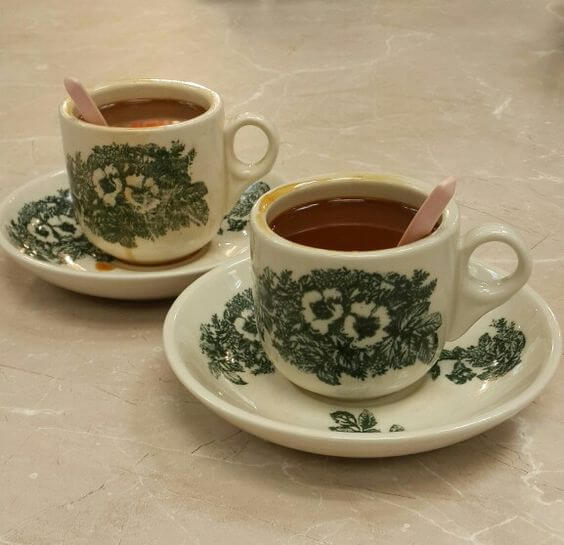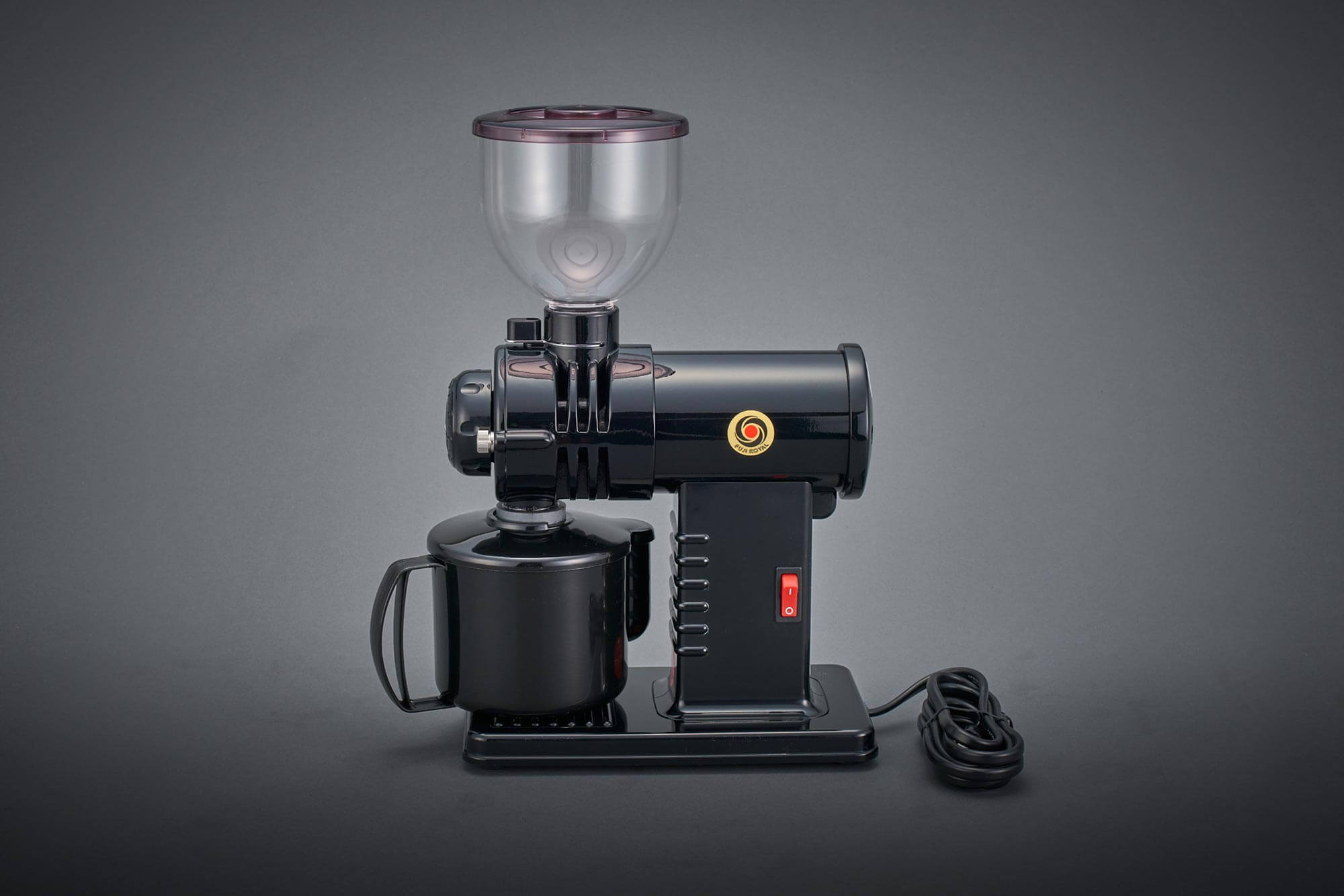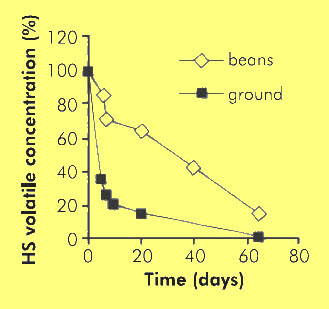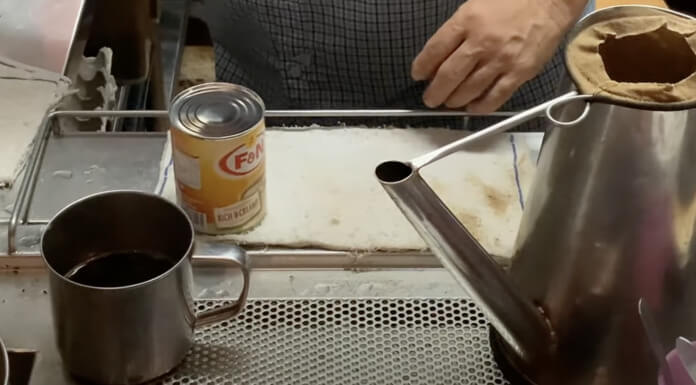In the heart of Singapore’s bustling streets, the familiar aroma of coffee – or as the locals fondly call it, “kopi” – wafts through the air. These brews find their homes in the city’s bustling hawker stalls and quaint coffee shops. Yet, even with an abundance of options, one could be left pondering, “Which stall serves the best or what’s the perfect kopi?”
While a long queue may be the obvious first indicator of a good brew, the real secret to identifying top-tier perfect kopi lies deeper.
This stark difference can be visualized in the following graph, depicting the rapid deterioration in flavour of ground coffee over mere hours, compared to the resilience of the whole bean.
The best stalls understand this delicate balance and grind their beans freshly for each brew, ensuring that every cup retains the coffee’s aromatic purity.
Steeped in tradition, the kopi brewing process often employs cloth filters, reminiscent of socks. The condition and usage of these filters play a pivotal role in the quality of the brew. A well-maintained filter, changed frequently, ensures a clean and pure extraction. Otherwise, the remnants will release astringents which would pollute the cup.
Top establishments often have multiple socks on standby, swapping them out after each use. Witnessing this rotation and their meticulous cleaning signals dedication to a pristine brew.
Brewing temperature is paramount. While boiling water might seem ideal, it can over-extract the coffee, resulting in a bitter taste. Expert baristas have developed techniques, such as pouring from a height, to moderate the water’s temperature, thereby preserving the coffee’s more delicate notes.
The ‘talik’ method, where means ‘pull’, kopi is poured between kettles, aids not just in cooling but also in enhancing the extraction of flavorful oils from the coffee. A simple stir, however, might yield similar results, reducing both oxidation risks and potential injuries to the barista.
Historically, Robusta and Liberica beans were the mainstays of the kopi world, primarily due to the Coffee Rust Disease that affected Arabica crops. While robusta beans are resilient, they often lack the aromatic depth of Arabicas. Early kopi brewers introduced additives to balance out the flavour. This includes mixing the coffee with maize or roasting it with magarine and sugar.
Today, with Arabica beans readily available, many stalls have shifted to blends that combine the robustness of Robusta with the aromatic subtleties of Arabica.
It’s important to recognize that the intensity of bitterness isn’t synonymous with aroma – a common misconception. A well-treated coffee, devoid of overpowering bitterness, speaks volumes in its aromatic flavours, often eliminating the need for additional sugar or milk.
To conclude, while every stall has its unique take on their perfect kopi, understanding these subtle indicators can elevate one’s coffee experience in Singapore. Of course, personal tastes will vary, but armed with this knowledge, you’re well-equipped to embark on a journey of discovery, finding that perfect cup of kopi that resonates with your palate.
While it’s rare to find stalls that check every box in the points mentioned above, the presence of an on-site grinder is perhaps the most definitive indicator of a superior brew, followed by the choice of coffee beans. We will expect more improvements in the coffee scene as knowledge of coffee improves and it will all be in the favour of the consumers.
If you have found a good coffee joint in Singapore, that has done well, please share in the comments for our readers to know.
[{"id":28500,"link":"https:\/\/www.finecoffeecompany.com\/why-forbes-recognized-italian-coffee-beans-are-transforming-singapores-office-culture\/","name":"why-forbes-recognized-italian-coffee-beans-are-transforming-singapores-office-culture","thumbnail":{"url":"https:\/\/www.finecoffeecompany.com\/wp-content\/uploads\/2024\/01\/Buy-Coffee-Beans-Singapore-Forbest-2024-Arcaffe.webp","alt":"Coffee Beans Singapore"},"title":"Why Forbes-Recognized Italian Coffee Beans Are Transforming Singapore's Office Culture","author":{"name":"Fine Coffee Company","link":"https:\/\/www.finecoffeecompany.com\/author\/fine-coffee-company\/"},"date":"Apr 16, 2025","dateGMT":"2025-04-16 05:42:08","modifiedDate":"2025-04-16 14:14:32","modifiedDateGMT":"2025-04-16 06:14:32","commentCount":"0","commentStatus":"closed","categories":{"coma":"<a href=\"https:\/\/www.finecoffeecompany.com\/category\/latest-updates\/\" rel=\"category tag\">Latest Coffee News and Blog<\/a>","space":"<a href=\"https:\/\/www.finecoffeecompany.com\/category\/latest-updates\/\" rel=\"category tag\">Latest Coffee News and Blog<\/a>"},"taxonomies":{"post_tag":""},"readTime":{"min":8,"sec":29},"status":"publish","excerpt":""},{"id":24937,"link":"https:\/\/www.finecoffeecompany.com\/which-coffee-machine-is-the-best\/","name":"which-coffee-machine-is-the-best","thumbnail":{"url":"https:\/\/www.finecoffeecompany.com\/wp-content\/uploads\/2023\/09\/espresso-machine-coffee-machine-singapore.jpg","alt":"which coffee machine is the best"},"title":"Which Coffee Machine is the Best in 2024?","author":{"name":"Fine Coffee Company","link":"https:\/\/www.finecoffeecompany.com\/author\/fine-coffee-company\/"},"date":"Jan 8, 2024","dateGMT":"2024-01-08 10:09:00","modifiedDate":"2024-01-09 01:45:38","modifiedDateGMT":"2024-01-08 17:45:38","commentCount":"0","commentStatus":"open","categories":{"coma":"<a href=\"https:\/\/www.finecoffeecompany.com\/category\/latest-updates\/\" rel=\"category tag\">Latest Coffee News and Blog<\/a>","space":"<a href=\"https:\/\/www.finecoffeecompany.com\/category\/latest-updates\/\" rel=\"category tag\">Latest Coffee News and Blog<\/a>"},"taxonomies":{"post_tag":""},"readTime":{"min":9,"sec":19},"status":"publish","excerpt":""},{"id":25344,"link":"https:\/\/www.finecoffeecompany.com\/coffee-and-weight-loss\/","name":"coffee-and-weight-loss","thumbnail":{"url":"https:\/\/www.finecoffeecompany.com\/wp-content\/uploads\/2023\/10\/DALL\u00b7E-2023-10-10-11.12.10-Photo-of-a-slender-glass-coffee-cup-with-its-dark-steaming-liquid-inside-placed-on-a-digital-scale-displaying-a-declining-number-symbolizing-weigh.jpg","alt":"coffee and weight loss"},"title":"Coffee and Weight Loss: What the Latest Research Shows","author":{"name":"Fine Coffee Company","link":"https:\/\/www.finecoffeecompany.com\/author\/fine-coffee-company\/"},"date":"Oct 10, 2023","dateGMT":"2023-10-10 03:31:47","modifiedDate":"2023-10-10 11:32:55","modifiedDateGMT":"2023-10-10 03:32:55","commentCount":"0","commentStatus":"open","categories":{"coma":"<a href=\"https:\/\/www.finecoffeecompany.com\/category\/latest-updates\/\" rel=\"category tag\">Latest Coffee News and Blog<\/a>","space":"<a href=\"https:\/\/www.finecoffeecompany.com\/category\/latest-updates\/\" rel=\"category tag\">Latest Coffee News and Blog<\/a>"},"taxonomies":{"post_tag":""},"readTime":{"min":11,"sec":17},"status":"publish","excerpt":""},{"id":25237,"link":"https:\/\/www.finecoffeecompany.com\/washed-coffee-vs-natural-coffee\/","name":"washed-coffee-vs-natural-coffee","thumbnail":{"url":"https:\/\/www.finecoffeecompany.com\/wp-content\/uploads\/2023\/10\/india_balehonnur-2-2048x1536-1.jpg","alt":"Washed Coffee vs Natural Coffee"},"title":"Washed Coffee vs Natural Coffee: Understanding Processing Methods","author":{"name":"Fine Coffee Company","link":"https:\/\/www.finecoffeecompany.com\/author\/fine-coffee-company\/"},"date":"Oct 3, 2023","dateGMT":"2023-10-03 15:35:37","modifiedDate":"2025-04-16 13:48:21","modifiedDateGMT":"2025-04-16 05:48:21","commentCount":"0","commentStatus":"open","categories":{"coma":"<a href=\"https:\/\/www.finecoffeecompany.com\/category\/latest-updates\/\" rel=\"category tag\">Latest Coffee News and Blog<\/a>","space":"<a href=\"https:\/\/www.finecoffeecompany.com\/category\/latest-updates\/\" rel=\"category tag\">Latest Coffee News and Blog<\/a>"},"taxonomies":{"post_tag":""},"readTime":{"min":7,"sec":6},"status":"publish","excerpt":""},{"id":25078,"link":"https:\/\/www.finecoffeecompany.com\/coffee-grounds-in-your-garden\/","name":"coffee-grounds-in-your-garden","thumbnail":{"url":"https:\/\/www.finecoffeecompany.com\/wp-content\/uploads\/2023\/09\/JasperArt_2022-08-28_21.20.44_3.jpg","alt":"Coffee Grounds in Your Garden"},"title":"Everything You Need to Know About Using Coffee Grounds in Your Garden","author":{"name":"Fine Coffee Company","link":"https:\/\/www.finecoffeecompany.com\/author\/fine-coffee-company\/"},"date":"Sep 28, 2023","dateGMT":"2023-09-28 06:44:45","modifiedDate":"2023-09-28 14:48:52","modifiedDateGMT":"2023-09-28 06:48:52","commentCount":"0","commentStatus":"closed","categories":{"coma":"<a href=\"https:\/\/www.finecoffeecompany.com\/category\/latest-updates\/\" rel=\"category tag\">Latest Coffee News and Blog<\/a>","space":"<a href=\"https:\/\/www.finecoffeecompany.com\/category\/latest-updates\/\" rel=\"category tag\">Latest Coffee News and Blog<\/a>"},"taxonomies":{"post_tag":""},"readTime":{"min":4,"sec":5},"status":"publish","excerpt":""},{"id":25000,"link":"https:\/\/www.finecoffeecompany.com\/free-coffee-day\/","name":"free-coffee-day","thumbnail":{"url":"https:\/\/www.finecoffeecompany.com\/wp-content\/uploads\/2022\/02\/espresso-machine-coffee-machine-singapore-2023.jpg","alt":"espresso machine coffee machine singapore 2023"},"title":"Free Coffee Day","author":{"name":"Fine Coffee Company","link":"https:\/\/www.finecoffeecompany.com\/author\/fine-coffee-company\/"},"date":"Sep 25, 2023","dateGMT":"2023-09-25 07:17:09","modifiedDate":"2023-11-18 21:54:55","modifiedDateGMT":"2023-11-18 13:54:55","commentCount":"0","commentStatus":"open","categories":{"coma":"<a href=\"https:\/\/www.finecoffeecompany.com\/category\/latest-updates\/\" rel=\"category tag\">Latest Coffee News and Blog<\/a>","space":"<a href=\"https:\/\/www.finecoffeecompany.com\/category\/latest-updates\/\" rel=\"category tag\">Latest Coffee News and Blog<\/a>"},"taxonomies":{"post_tag":""},"readTime":{"min":2,"sec":3},"status":"publish","excerpt":""},{"id":24721,"link":"https:\/\/www.finecoffeecompany.com\/what-makes-the-perfect-kopi\/","name":"what-makes-the-perfect-kopi","thumbnail":{"url":"https:\/\/www.finecoffeecompany.com\/wp-content\/uploads\/2023\/09\/Singapore-traditional-kopi.jpg","alt":"Singapore traditional perfect kopi"},"title":"Decoding Singapore's Coffee Culture: What Makes the Perfect Kopi?","author":{"name":"Fine Coffee Company","link":"https:\/\/www.finecoffeecompany.com\/author\/fine-coffee-company\/"},"date":"Sep 13, 2023","dateGMT":"2023-09-13 04:48:45","modifiedDate":"2023-09-14 09:22:56","modifiedDateGMT":"2023-09-14 01:22:56","commentCount":"0","commentStatus":"open","categories":{"coma":"<a href=\"https:\/\/www.finecoffeecompany.com\/category\/latest-updates\/\" rel=\"category tag\">Latest Coffee News and Blog<\/a>","space":"<a href=\"https:\/\/www.finecoffeecompany.com\/category\/latest-updates\/\" rel=\"category tag\">Latest Coffee News and Blog<\/a>"},"taxonomies":{"post_tag":""},"readTime":{"min":3,"sec":44},"status":"publish","excerpt":""},{"id":22947,"link":"https:\/\/www.finecoffeecompany.com\/how-long-can-coffee-last\/","name":"how-long-can-coffee-last","thumbnail":{"url":"https:\/\/www.finecoffeecompany.com\/wp-content\/uploads\/2023\/06\/Testing-a-coffee-roasted-two-years-ago.jpg","alt":"How long can coffee last"},"title":"How long can coffee last?","author":{"name":"Fine Coffee Company","link":"https:\/\/www.finecoffeecompany.com\/author\/fine-coffee-company\/"},"date":"Jun 26, 2023","dateGMT":"2023-06-26 08:56:41","modifiedDate":"2023-06-26 17:08:08","modifiedDateGMT":"2023-06-26 09:08:08","commentCount":"0","commentStatus":"closed","categories":{"coma":"<a href=\"https:\/\/www.finecoffeecompany.com\/category\/latest-updates\/\" rel=\"category tag\">Latest Coffee News and Blog<\/a>","space":"<a href=\"https:\/\/www.finecoffeecompany.com\/category\/latest-updates\/\" rel=\"category tag\">Latest Coffee News and Blog<\/a>"},"taxonomies":{"post_tag":""},"readTime":{"min":2,"sec":58},"status":"publish","excerpt":"What happens if you extract a coffee roasted from 2 years ago?"},{"id":22881,"link":"https:\/\/www.finecoffeecompany.com\/inflation-special-deal\/","name":"inflation-special-deal","thumbnail":{"url":"https:\/\/www.finecoffeecompany.com\/wp-content\/uploads\/2023\/01\/pexels-cottonbro-studio-6531723.jpg","alt":"Inflation Special Deal"},"title":"Restaurant, Cafe and Office Inflation Special Deal","author":{"name":"Fine Coffee Company","link":"https:\/\/www.finecoffeecompany.com\/author\/fine-coffee-company\/"},"date":"Jun 23, 2023","dateGMT":"2023-06-23 15:03:04","modifiedDate":"2023-06-26 20:29:58","modifiedDateGMT":"2023-06-26 12:29:58","commentCount":"0","commentStatus":"closed","categories":{"coma":"<a href=\"https:\/\/www.finecoffeecompany.com\/category\/latest-updates\/\" rel=\"category tag\">Latest Coffee News and Blog<\/a>","space":"<a href=\"https:\/\/www.finecoffeecompany.com\/category\/latest-updates\/\" rel=\"category tag\">Latest Coffee News and Blog<\/a>"},"taxonomies":{"post_tag":""},"readTime":{"min":3,"sec":53},"status":"publish","excerpt":"As inflation increase and the powering power of consumers gets lower, many of us are all in hard times together. We think it's good if we can help those who might need a hand."},{"id":20498,"link":"https:\/\/www.finecoffeecompany.com\/coffee-consumption-and-its-impact-on-kidney\/","name":"coffee-consumption-and-its-impact-on-kidney","thumbnail":{"url":"https:\/\/www.finecoffeecompany.com\/wp-content\/uploads\/2023\/03\/pexels-mart-production-7330130.jpg","alt":"Coffee Consumption and its Impact on Kidney"},"title":"Coffee Consumption and its Impact on Kidney Disease: A Meta-Analysis","author":{"name":"Fine Coffee Company","link":"https:\/\/www.finecoffeecompany.com\/author\/fine-coffee-company\/"},"date":"Mar 28, 2023","dateGMT":"2023-03-27 16:00:28","modifiedDate":"2023-03-28 00:00:35","modifiedDateGMT":"2023-03-27 16:00:35","commentCount":"0","commentStatus":"closed","categories":{"coma":"<a href=\"https:\/\/www.finecoffeecompany.com\/category\/latest-updates\/\" rel=\"category tag\">Latest Coffee News and Blog<\/a>","space":"<a href=\"https:\/\/www.finecoffeecompany.com\/category\/latest-updates\/\" rel=\"category tag\">Latest Coffee News and Blog<\/a>"},"taxonomies":{"post_tag":""},"readTime":{"min":3,"sec":6},"status":"publish","excerpt":""},{"id":20278,"link":"https:\/\/www.finecoffeecompany.com\/how-to-make-a-kopi-that-tastes-much-better-with-an-espresso-machine\/","name":"how-to-make-a-kopi-that-tastes-much-better-with-an-espresso-machine","thumbnail":{"url":"https:\/\/www.finecoffeecompany.com\/wp-content\/uploads\/2023\/02\/Singapore-Fine-Coffees-Kopi-Coffee-Crema.jpg","alt":"How to make a Kopi Better. Kopi Crema"},"title":"How to make a Kopi that tastes much better with an espresso machine? Introducing Kopi Crema","author":{"name":"Fine Coffee Company","link":"https:\/\/www.finecoffeecompany.com\/author\/fine-coffee-company\/"},"date":"Mar 2, 2023","dateGMT":"2023-03-02 05:13:12","modifiedDate":"2023-10-19 21:48:25","modifiedDateGMT":"2023-10-19 13:48:25","commentCount":"0","commentStatus":"closed","categories":{"coma":"<a href=\"https:\/\/www.finecoffeecompany.com\/category\/latest-updates\/\" rel=\"category tag\">Latest Coffee News and Blog<\/a>","space":"<a href=\"https:\/\/www.finecoffeecompany.com\/category\/latest-updates\/\" rel=\"category tag\">Latest Coffee News and Blog<\/a>"},"taxonomies":{"post_tag":""},"readTime":{"min":21,"sec":48},"status":"publish","excerpt":"One question that our coffee specialists always get asked is, \"Is there a way to improve Kopi?\n\nOr visitors who came to our experimental room questioned, \"How to make a Kopi with an espresso machine?\" \n\nOne question that our coffee specialists always get asked is, \"Is there a way to improve Kopi?\n\nOr visitors who came to our experimental room questioned, \"How to make a Kopi with an espresso machine?\" \n\nWhen you have a coffee specialist and someone from Singapore, we had the same questions and had done the research before. Introducing Kopi Crema!"},{"id":19897,"link":"https:\/\/www.finecoffeecompany.com\/does-descaling-espresso-machines-work\/","name":"does-descaling-espresso-machines-work","thumbnail":{"url":"https:\/\/www.finecoffeecompany.com\/wp-content\/uploads\/2023\/02\/espresso-machine-descaling-problems.jpg","alt":"Descaling espresso machines"},"title":"Does descaling espresso machines work","author":{"name":"Fine Coffee Company","link":"https:\/\/www.finecoffeecompany.com\/author\/fine-coffee-company\/"},"date":"Feb 14, 2023","dateGMT":"2023-02-14 03:43:23","modifiedDate":"2023-12-30 15:06:17","modifiedDateGMT":"2023-12-30 07:06:17","commentCount":"0","commentStatus":"closed","categories":{"coma":"<a href=\"https:\/\/www.finecoffeecompany.com\/category\/latest-updates\/\" rel=\"category tag\">Latest Coffee News and Blog<\/a>","space":"<a href=\"https:\/\/www.finecoffeecompany.com\/category\/latest-updates\/\" rel=\"category tag\">Latest Coffee News and Blog<\/a>"},"taxonomies":{"post_tag":""},"readTime":{"min":8,"sec":18},"status":"publish","excerpt":"Limescale build-up is one of the worst things to happen to any coffee machine, much worst than a dirty machine. They form solid obstructions from the inside and can cause severe damage when the sensors are hindered. What can be done?"}]



